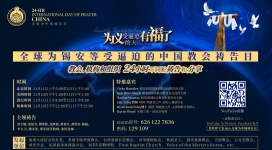
Electric and hybrid vehicles have been hailed to be the future of the automobile, as developed countries work in tandem with one another in order to make sure that they end up with less fossil fuels burned, resulting in a cleaner environment for everyone. Of course, a lower dependency on oil for any country is also a good thing, since it would not have its economy being held ransom to the price of oil. Toyota of Japan has long looked into the future where its automobiles are concerned, and I clearly remember how its Prius hybrid vehicle proved to be quite the hit when it was first revealed all those years back, and has continued down a few generations. This time around, we received word that Toyota has succeeded in achieving a breakthrough for its battery technology. This particular breakthrough for batteries will be able to increase the range of electric vehicles by up to 15%.
According to Toyota, this particular technological breakthrough has been described as “the world’s first method for observing the behavior of lithium ions in an electrolyte when a battery charges and discharges.” Being able to to see these ions “work” in real time for the very first time, researchers over at Toyota might have a niggling suspicion that they have finally figured out why a battery ages in time. The point where this particular ends up commercialized might be a couple of three years down the road, resulting in an all new lithium ion battery that might actually see an improvement of up to 15% in terms of range for electric vehicles.
Dr. Hisao Yamashige who hails from Toyota’s advanced R&D and engineering division informed this amazing discovery to a bunch of reporters over at the company’s Tokyo HQ. The road to arrive at this particular destination at the moment has not been an easy one, where it is the culmination of 3 years’ work. The huge synchrotron that is located at the northeast of Kobe, Japan, also has a crucial role to play in Toyota being able to check out the travel of ions from a battery’s minus to its plus side, resulting in electricity. The Spring-8 synchrotron that sports a ring with a 5,000 ft diameter was constructed around a hill in Japan’s Hyogo Prefecture. This synchrotron was then bombarded with radiation at levels a billion times stronger compared to that of a chest X-ray onto the battery, resulting in moving images on a high-speed camera. One of the world’s largest synchrotrons in existence, it was developed alongside the RIKEN Institute and the Japan Atomic Energy Research Institute, and this ring has a rental of $600 per hour -- should you prefer to keep the research to yourself. Be generous and publish your research, and it can be used for free, now how about that?
Basically, Toyota would like to take advantage of this new observation method in order to work on batteries which can hold a charge for a longer period of time, with commercialization being targeted in two years’ time at the earliest. Assuming the Chevrolet Bolt’s official range of 238 miles on a full charge, a 15% increase would see it jump to 273 miles, which is another 35 miles of improvement. Not too shabby, actually.







